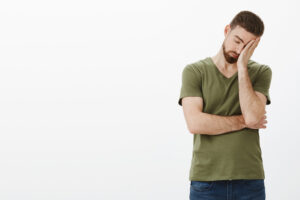
Mental illness has been one of the largest healthcare issues that are enveloping the world and impacting the lives of millions of people around the globe. With such issues, the majority of practitioners have looked for alternative choices for the management of neuropsychiatric illnesses without medications. Such therapies help patients to control their symptoms with the mind, modify patterns of behavior, and improve coping mechanisms. These therapies are applied alone or in combination with psychopharmacologic medications. In this section, I outline the different treatment processes of curing mental diseases without medication.
Psychotherapeutic treatments
Psychotherapy is also known as one of the most well-liked therapy approaches for mental illness. The therapy applies various methods attempting to change the patient’s thoughts, actions, and emotional processes. The following is the explanation of some of the most important psychotherapy techniques:
- Cognitive Behavioral Therapy (CBT)
The most frequent and successful form of psychotherapy to treat most of the mental illnesses, including depression and anxiety, is cognitive behavior therapy. Cognitive behavior therapy is based on the fact that unhealthy acts and emotions are caused by negative and distorted thinking. The patient can recognize and overcome their negative self-defeating thoughts using CBT. The main objective of this therapy is to modify and substitute unhealthy thought patterns with realistic and positive thought patterns. Besides this, CBT also helps the patients achieve better coping mechanisms to handle tension and everyday issues.
- Psychoanalysis
Psychoanalysis is the oldest and conventional method of psychotherapy. Psychoanalysis investigates the unconscious mind of the patient and follows a school of thought that most of the psychological problems are formulated due to suppressed emotions and deal with the unconscious. In psychoanalysis, the patient, under the guidance of the therapist, analyzes dreams, lapses, and childhood recollections in an attempt to bring into existence the cause of their psychological problems. Although it is a time-consuming process, but it can give an individual a clear idea about his psychological problems and be able to control them.
- Acceptance and Commitment Therapy (ACT)
Acceptance and commitment therapy is also one of the newer psychotherapies that allow one to accept painful feelings and proceed towards values and goals instead of running away from them. In acceptance and commitment, the patient learns to accept unwanted feelings and thoughts and live according to their own values. The exercise is of tremendous importance It is appropriate for those suffering from anxiety disorders, depression disorders, and stress disorders.
- Dialectical Behavior Therapy (DBT)
Dialectical Behavior Therapy is yet another form of psychotherapy, which was initially developed to address borderline personality disorder patients, yet today it’s used as a treatment for various other disorders such as depression, eating disorders, and stress disorders. In DBT, the patient learns how to switch from one mutually opposite pole (change) to another (acceptance). It puts more emphasis on emotional management and enhancing people skills in order for the patients to stop being self-destructive and acquire some new coping strategies.
- Counseling
Psychological counseling is a procedure of providing emotional and practical assistance to patients who can be plagued by mental illness. It can be conducted one to one, family, or groups, and in assisting patients to handle day-to-day issues, stress, and menopause.

Mind- and Body-Based Therapies
Mind-body therapies are the treatments which deal with the mind-body relationship and try to optimize the mental health of the patient by optimizing this interaction. These treatments ask the patients to calm down their mind and have a positive influence on their physical as well as mental health through one or more mechanisms. Some of these methods are described below. I will explain them:
- Meditation and Mindfulness
Mindfulness and Meditation is a very effective and most used psychotherapeutic process of stress management, anxiety management, and depression management. During the process, the patient provides clean attention to the here and now moment and tries to watch their own feelings and thoughts without judgment. Meditation switches off unnecessary brain activity and provides some relief time to the patient from normal stresses and tensions. Regularity of meditation has been proven to normalize mood and enhance sense of calmness and happiness.
- Yoga
Yoga is a body and mind exercise masquerading as a series of stretching, breathing, and meditation exercises. This exercise fortifies the mind-body connection and is helpful in managing depression, anxiety, and stress. Besides improving body strength and flexibility, yoga allows a person to calm their mind by focusing on movement and breathing. Yoga was found to enhance sleep, reducing symptoms of depression, and general quality of life among patients.
- Deep breathing and relaxation
Relaxation and breathing exercises help the patient cope with stress and anxiety by controlling their breathing and monitoring their body’s physiological response. Due to these exercises, the patient is able to unwind the nervous system through slow breathing and deep relaxation and is able to experience a drop in blood pressure, heart rate, and tension.
- Biofeedback
Biofeedback is a treatment in which a patient is able to see feedback regarding the physiological reaction of his own body and uses it for enhancement. In this procedure, the patient is able to see feedback such as his heart rate, respiration, temperature of the body, and activity of the brain from some instrument, and gets trained in controlling these reactions. Biofeedback It is most effective in relieving muscle tension, anxiety, and migraine headache.
- Mental Imagery
Mental imagery is one application where the person tries to increase his calmness and relaxation mentally either by following a therapist or by focusing on mental imagery. This use helps a person reduce his tension and anxiety in the mind by imagining peaceful locations or joyful incidences. It is an use for reducing anxiety, pre-operative tension, and improving sleep. It is quite effective.
Sports and physical activity therapies
Physical exercise plays a significant role in improving mental well-being. Physical exercise is helpful to the mind and mental well-being and is capable of diminishing symptoms of mental illness such as depression and anxiety. Some of these interventions include:
- Aerobic Sports
Aerobes such as running, swimming, cycling, and walking are the most efficient exercises to improve mental well-being. Aerobes produce good mood hormones such as serotonin and endorphins that increase mood and relieve depression and anxiety.
- Resistance training
Resistance or strength training such as weight lifting and body weight exercise also have positive effects on the mind as well as strengthening muscle. Increased confidence and increased feelings of power and control over oneself result from such exercise. Resistance training also reduces cortisol levels in the body and is observed to improve mood as well as decreasing anxiety.
- Nature Walks
Nature walk will be the simplest and most effective stress relief and mood boost activity. Exposure to nature might have some beneficial effects to reduce depression and stress. They’ve mentioned that a short nature walk in parkland will alleviate tension, improve positive mood, and increase energy.
- Team sports
Participation in group sports activities such as soccer, volleyball, or basketball is not only healthy for the body, but also for social relationships and feelings of belonging. Being with others and communicating can turn around loneliness and depression. Team sport can increase an individual’s motivation level and support against stress and pressures of everyday life It can cope with better.
- The Effect of Exercise Hormones on Reducing Stress and Anxiety
Physical activity leads the brain to release chemical substances such as endorphins and serotonin that make a person happy and stress-free. Other than making one relaxed and euphoric, such hormones facilitate a person in controlling depression and anxiety better. Physical activity upholds such a role in the brain, and a person improves mentally and psychically.

Social and environmental therapies
Ecological and social therapies treat the human relationship with others and nature and have a central role in the improvement of mental health. I refer below to some of them most relevant:
- Social Protections
Social protections encompass receiving sympathy and support from others, i.e., friends, relatives, and colleagues. People with good social relationships are in the best position to deal with the stresses and pressures of life. People who have been helped by social support will be less likely to develop depression and anxiety. Social supports can be emotional, practical and counselling.
- Support Groups
Support groups have members who face similar struggles, such as a mental illness. Such organizations provide comfort by helping people realize they are not the only ones with such experiences and feelings. Support groups are a good place to share issues and gain self-esteem and support for dealing with them. During these meetings, individuals can learn from others and enjoy belonging to the group.
- Group therapies
Group therapies are a type of therapeutic treatment under the guidance of a trained psychotherapist where a group of people go through the therapy session together. Under this session, the people share their issues and discuss and resolve these issues through the guidance of the therapist and the group. This type of therapy gives an experience of empathy, sharing troubles, and learning from each other. They can improve social skills, communication, and reduce loneliness.
- Changes in the living environment
Enhancement of living space, for example, enhancing the home or work environment, can contribute to the enhancement of mental health. Exposure to natural light, plants, gentler colors, and a quiet and clean environment can reduce stress and enhance mood. Therapeutic environments also facilitate recovery by allowing the creation of a safety and comfort-oriented environment for patients.
Challenges and limitations of non-pharmacological treatments
Despite being amazingly effective non-pharmacologic therapies, they also have limitations and disadvantages. These are provided as follows:
- Requires long-term time and effort
Non-pharmacologic therapies are labor-intensive and time-consuming. Most of them, such as psychotherapy or mind-body therapy, take months or years before actual progress starts showing up, while others use alternatives that are quicker, such as medication.
- Limitation of effectiveness in severe cases
In some of the more severe mental illnesses like schizophrenia or extreme depression, drug-free treatment alone may prove inadequate. In such cases, the treatments must be supplemented with psychiatric drugs if they are to be effective. For example, patients with psychoses may require antipsychotics while psychotherapy alone may prove inadequate for them.
- The need for access to professional professionals
These are largely carried out with the assistance of professional professionals. For example, psychotherapy must be performed by a skilled psychotherapist or biofeedback methods involve costly equipment as well as skilled therapists. Such professionals are not everywhere and in certain cases are costly.
- Lack of public awareness and social acceptance
In all societies, such non-medical interventions are also in short supply, and the people may lack trust in them or even may believe that they are not as effective as medicine. There are also individuals who would not even employ such types of interventions due to cultural beliefs or for fear of people judging them. A patient would thus be treated poorly in these instances.
- Individual effectiveness and personalization of treatments
One of the largest non-pharmacological therapy issues is that they can’t do better for everyone. That is, every individual responds differently to treatments, and what can do on one individual can’t do on another individual. To generate the desired effect, one must make treatment to everyone, which needs more effort and time It takes.
- High Costs
Some of the non-pharmacological approaches, especially those involving delivery of professional professionals (e.g., psychotherapy or biofeedback training) are costly. Drug is costlier in the short term, but non-pharmacological approaches are costlier in the long term.
- Lack of research in some methods
Although a couple of the non-pharmacological interventions such as CBT and meditation have been empirically well tested, a couple such as some of the diet or art therapies are yet to be investigated. This lack of such large numbers of investigations could reduce the effectiveness of such interventions and limit their use.
Final Thoughts
Despite these challenges and limitations, non-pharmacological therapies can help improve mental health as part of a multi-pronged approach and bring positive outcomes for patients in combination with other therapies. Each of these therapies can be used based on individual needs and preferences and can be applied independently or in combination with other therapies. It is important that the best and most effective path is chosen as a result of consulting with a specialist.
Resources
Non-pharmacological interventions for mental disorders
Non-Pharmacological Treatments of Neuropsychiatric Symptoms in Mild Cognitive Impairment








No comment yet, add your voice below!